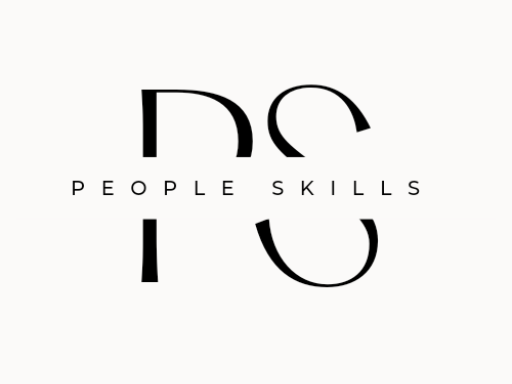Leadership and coaching are vital elements in any organization. Effective leaders demonstrate advanced coaching skills that allow them to inspire, motivate, and guide their organizations and team members. While leadership is about guiding and influencing others towards a shared vision, coaching involves providing guidance to team members to maximize their potential. Daniel Goleman mentions Coaching as being the most impactful leadership style. Its only downside, compared to the rest of the styles, is that Coaching needs a lot of work, patience and dedication from the leaders’ side for it to fully drive results. Time and patience are precious resources that most of us don’t really have in today’s fast paced world. When we are constantly under pressure from being 24/7 connected via e-mails & smartphone & instant messaging applications, coaching needs to move on from being a weekly 1-hour session to a more agile approach. I call it: fast-coaching!

The secret to being a good coach lies in 2 simple things. If you master these, you will be an excellent coach that people will enjoy talking to. Just remember to:
- Stay curious
- Shut up!
This article is inspired by the book of Michael Bungay Stanier, entitled: “The Coaching Habit: Say Less, Ask More & Change the Way You Lead Forever”, but will not be a book review. I am going to leave out some parts (don’t be mad at me for that) and will be adding my own personal take on how coaching should work in today’s organizations (don’t get mad for this either), based on the guidelines presented in the book.
If you are interested in reading the whole book yourself, it’s available on Amazon.
Michael Bungay Stanier structures his coaching practice on asking the right questions and then (remember the 2 simple things good coaches do?): shutting up. And of course, while shutting up, also actively listening to what the other person is saying.
Let’s explore the 7 questions a coach could / should / would ask!
#1. The Kickstart Question | “What’s on your mind?”
The first question is utterly important, because it sets the tone of the whole conversation. “What’s on your mind?” is general enough so that you don’t steer the other person in any specific direction, but it’s an invitation for opening up about what is really important for them.
Once you start interacting, you can go into 2 directions with your coaching discussion:
- Performance oriented, where you will be discussing about issues and challenges related to daily activities, business as usual. In other words, about problems.
- Development oriented, where the focus will be on the coached persons’ learning and development areas. In other words, about people.
We all have the same basic needs (remember SCARF? Read the related PeopleSkills article again here) and people will respond better to the Development oriented discussions, where they are in the center of attention. Whenever possible, make it so that your interaction will be about learning opportunities and development. Which in turn inevitably will drive operational improvement.
#2. The AWE Question | “And What Else?”
Such a simple question yet so powerful! Just 3 magic words: And + What + Else?
Whatever answer you have received to your first question, be sure that it is almost never the only and almost never the best answer out there.
Just think about it mathematically:
- When given 2 choices, there is a 50-50 % chance for one of them being a wrong choice.
- When given 3 choices, the chances of picking the wrong answer sink to 33%!
- When given 4 choices, the chances sink even lower, to 25%!
Your job as a coach, is to keep asking the AWE Question and (remember!) shut up. 😊
For sure, the Advice Monster will pop up and try to sabotage your discussion. But this session is not about you. Not about you feeling good and saving the day. You are not Superman, it’s not your job to save the day. Your job is to ask the right questions and thus drive the other person in the right direction.
Also, without asking the right questions and enough of them, you can never be sure that you know the real problem that needs to be solved. Don’t assume; ask! Ask until the answer you receive (to the question “What else?”) is: “Nothing” That’s your clue to move on to our next question.
Needless to say, use variations of the AWE question; don’t repeat “And what else?” like a robot, because you will get caught and the trick will not work anymore!
Examples:
- What’s on your mind?
- Answer1
- And what else?
- Answer2
- What else could you do?
- Answer3
- Anything else you could try?
- Answer4
# 3. THE FOCUS QUESTION | “What’s the real challenge for You?”
As I mentioned before, if you don’t ask, you will definitely not know the real issue that needs addressing.
By failing to properly investigate:
- You risk solving the “wrong” problem
- You risk solving the problem yourself, instead of making the other person responsible and using this opportunity for a learning session
- Things might not get resolved at all, because you have gathered so many problems to solve that you are totally overwhelmed by them
Resist the temptation of solving the first problem. It’s probably not the most important one.
Slow down, take a breath and look at the whole picture. Consciously or unconsciously, your team will look to you for guidance and they will mimic your behaviors. Can you imagine a scenario, where the leader is running around like a headless chicken, while the team is working in an orderly, organized and structured manner? I don’t think so!!!
This question is a really tricky one. Let me explain how:
- First variation might be: “What’s the challenge?”. Although it is going in the right direction, it’s too vague. A vague question will give you a vague answer.
- Second variation might be: “What’s the real challenge?”. This already suggests there might be several challenges present and one has to be singled out. The single most important one.
- The final version that works best: “What’s the real challenge for you?”. The little word: “you” puts everything into perspective. We need one challenge from them all, the one that is important for you!
You can also use this as a standalone question, in following situations:
- When challenges are overwhelming
- You naively ask the first question, and just like a popcorn “popping”, endless challenges are getting thrown at you with the speed of light! In this case, I am sure you will skip the AWE question, you have a long enough list to sort out 🙂. Resist the urge to select the most important one yourself!
- Ask: “If you were to pick just one of these challenges, which one would be the real one for you?”
- When coaching phantoms
- When you ask all the right questions, but end up discussing about a 3rd person who is not even present: that’s not coaching; it’s gossiping.
- Ask: “I believe I understand the situation now. What do you think it is the biggest challenge for you?”
- Whenever:
- The coachee is talking a lot, but isn’t saying much
- Lots of general theories and theoretical information are being shared with you but nothing specific to grasp
- You have received a high-level overview, from an outside observer
- The most often used pronouns are: we, us, our. Instead of me, mine
- Ask: “I understand the whole picture now. And what is the real challenge for you?”
# 4. THE FOUNDATION QUESTION | “What do you want?”
It might sound harsh at first, but asking for what is more specific and to the point then asking for the why. Also, when asking for whys, questions tend to get a different tone. Let me demonstrate:
Imagine this conversation in an office setting:
- “Why did you do that?”. vs. “What were you trying to achieve with applying this method?”
- “Why did you think that was a good idea?” vs. “What made you choose this solution?”
- “Why is this thing bothering you?” vs. “What makes this important to you?”
Which has a more aggressive tone and risks being misinterpreted?
You need to go ahead and ask about, “What do people really want”, because more often than not, the real problem, isn’t said out loud. Asking can be scary, because once this open question has left your mouth, who knows what real desires you will hear about. But don’t panic and definitely don’t feel obligated to answer YES to whatever the other person wants! You can say either Yes, No, Not this but instead that.
# 5. THE LAZY QUESTION | “How can I help you?”
Don’t be afraid of the awkward silence after asking your question!
When there is silence after asking your question, that’s okay. It means you’ve given the other person something to think about. Just be patient and wait for the answer.
Always ask how the other person would like you to help. Don’t just jump into problem-solving mode! Offering to help may increase your Status (SCARF button), but it’s important to remember that it’s not about you. Instead, focus on the other person and ask what they need from you. Meaning that by your Status rising, the other persons’ Status is decreasing. And by doing coaching, your focus should always be on the other person, not on yourself! Don’t offer help unless it’s requested, and don’t jump into a Rescuer Role without being asked. Instead, ask how you can help and wait for a clear request. For sure the last time you looked in the mirror, you didn’t wear a blue T-Shirt with a big S in the middle 🦸♂️.
With the question: “How can I help you”, the other person has to come up with a clear request. Based on the request you can either agree or disagree. Say “Yes” or say “No” or say “Not this but that” or “Let me think about it”.
A more direct version of this question: “What do you want from me?” might sound too aggressive, so pair it with some curiosity.
- “Out of curiosity: what do you want from me?”
- “So that I better understand: what do you want from me?”
- “Making sure I understand: what do you want from me?”
When someone comes to you with a very clear statement where help is needed, say something like:
- “It’s a good question. I do have some ideas myself, and I will tell them to you. But first: Let me know what do you think about this topic?
- Answer1
- Fantastic! And what else could you do?
- Answer2
- These are all good ideas. Do you believe you could do anything else or try something else?”
# 6. THE STRATEGIC QUESTION | “If you say YES to this, what will you be saying NO to?
You can’t have your cake and eat it too!
Your time and capacity are limited. Whenever you say YES to something, you automatically say NO to something else.
- Staying overtime → leaves no time for the gym
- Sleeping in late → means missing the sunrise
- A three-week summer vacation-> meaning no vacation days for skiing
Life is a series of compromises and you want to make sure that people understand fully what their YES means and that they are fully committed to it. To assist them on their journey, you can ask following questions:
- What projects will you have to put on stand-by/delay.
- Which meetings will you stop attending,
- Which relationships will suffer as a result of…
- Which habits or behavior patterns need to be changed?
# 7. THE LEARNING QUESTION | “What was the most important takeaway for you from this discussion?”
Some variations of this question:
- “What did you discover since we last talked?” – can be used at the beginning of a conversation
- “What did you learn?”
- “What is the greatest realization you have come to?”
- “What’s important to remember?”
Always pay attention to the answers because they are an excellent learning opportunity also for you. You can easily find out what worked and what didn’t work. What do others find important and which message got through?
You have suppressed you Advice Monster during the whole conversation, stepped on your Status to allow the other person to shine and confined your inner Superman to an office job but nonetheless, this last question will remind people why you are so important for them and everything else gets back into a balance! 😊
Coaching with these simple questions will come very naturally if you remember to:
- Stay curious
- Shut up!

